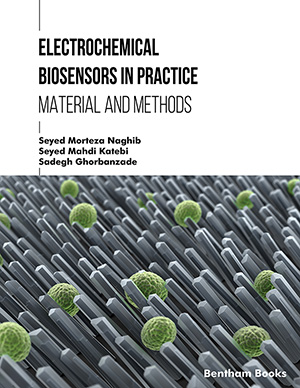Abstract
The fourth chapter focuses on essential materials for biosensing platform research, including graphene, carbon nanotubes, conductive polymer, and other advanced materials. This chapter describes the function of each biosensing platform and the most recent advances in the synthesis and application of advanced materials. After three sections on the subject's fundamentals, this and the following two chapters present experimental and research-relevant material. For this purpose, carbon-based materials will be examined first, including the following categories: fluorines, carbon nanotubes, graphene, nanodiamonds of carbons, carbon nanohorns, carbon dots, and carbon nanofibers. This section examines the research on these materials and the types of conductive polymers utilized in electrochemical biosensors. Several polymers and their functional techniques, including MNPPFs, MIP/SIPs, and dendrimers, are examined in the following sections. The nanoparticles, such as Au, Pt, Ag, Pd, Ni, Cu, Fe2O3, TiO2, ZnO, zeolites and other aluminosilicates, inorganic quantum dots, doped inorganic NMs, nanowires, Carbon black, and calixarenes, are then investigated. Then, biological materials are examined, including enzymatic nanocomposites, nucleic acid nanocomposites, immunoassay-based nanocomposites, aptamers, and biopolymeric nanocomposites. Finally, sandwich- or composite-based biosensor materials are discussed.
Keywords: Carbone, Electrode materials, Recognition element, Polymers.






















